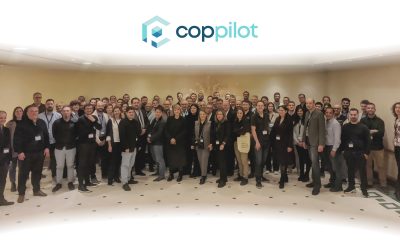FIWARE is enabling a new generation of smarter applications which exploit large scale, real-time ‘context information’. Particularly, the NGSI version 2 API is aimed at making developer’s life easier, by providing simpler but powerful RESTful interfaces. Markedly, the combination of NGSI version 2 and harmonized data models enables the creation of portability at the data layer. As a result, a myriad of end-user applications can seamlessly work and interoperate in different scenarios, namely smart cities.
During 2015, GSMA, FIWARE (represented by Telefónica I+D) and Korea Telecom have been working on a project called ‘IoT Big Data Ecosystem’ (IoTBDE). One of the most interesting results of the IoTBDE project is a set of harmonized data models exposed through NGSI version 2. These harmonized data models have been instantiated in different datasets, which encompass actual data coming from different and original sources (cities, public organisms).
Additionally, the referred datasets have been used by real world showcases, demoed with great success at MWC 2016, The datasets have engaged remarkably well, both with cities (Porto, Santander, Seville, Antwerp) and with accelerated SMEs. In fact, such pilot datasets are a proof of a concept with a view to developing further standardization, particularly in the context of the Open and Agile Smart Cities (OASC) initiative.
The work already done has been focusing on the following data models and accompanying datasets:
-
Point of interest (entity type PointOfInterest). It models different points of interest such as public parking lots, weather or air quality stations, and others. The pilot dataset includes data both from cities and from public organisms.
-
Weather
- forecast (entity type WeatherForecast). It models a weather forecast, including all the expected values for the different variables (temperature, humidity, wind speed, maximum, minimum, etc.). In the pilot datasets, the weather forecasts come from public state meteorology agencies, from Spain (AEMET) and Portugal (IPMA).
- observed (entity type WeatherObserved). It represents weather observations offered by the automated weather stations owned by AEMET.
- alarms (entity type WeatherAlarm). They correspond to weather alarms provided by the European Meteoalarm service.
-
Ambient observed (entity type AmbientObserved). This entity type corresponds to the observations of the air quality in a city. The pilot dataset offers real time pollution data from the city of Madrid. Also, the data from Santander and Porto is currently following the same data model.
-
Parking (StreetParking or ParkingLot). Smart parking data models capture information that is needed to optimize car mobility in cities. The pilot dataset includes data from Santander. The cities of Seville, Antwerp and Porto are currently offering their data following the same data model.
Practical examples of using the NGSIv2 API, implementation details and additional information, are all provided at the Github repository of the project.
The IoTBDE project has enabled the experimentation, and validated the suitability of the FIWARE-NGSIv2 (APIs plus harmonized data models) as a universal mechanism for sharing context data of different nature. Further work, which will be conducted together with GSMA, other telco operators and with the whole FIWARE Community, will involve the refinement and improvement of NGSI version 2 by including linked data features (JSON-LD), and the commencement of a more formal standardization work around data models.
Last but not least, we encourage entrepreneurs, developers and researchers to contribute to this exciting work and to continue experimenting and building nice stuff with FIWARE and its open APIs!
Jose Manuel Cantera Fonseca. Technological Expert (Telefónica I+D)



